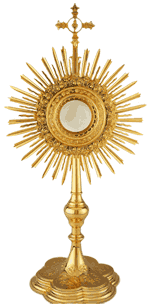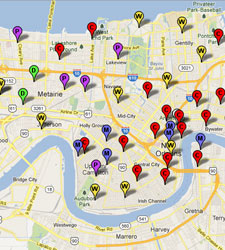The only reason we know about Jesus Christ is that someone told us. More than likely, that person was our parents, but it could have been a priest, a teacher or even a friend. And the person who told us only knew about Jesus because someone had told him or her. And someone told that person, too. And so on. We trace that chain of people passing on their knowledge of Christ back to the Apostles, who were told by Jesus to: “Go, therefore, and make disciples of all nations, baptizing them in the name of the Father, and of the Son, and of the holy Spirit, teaching them to observe all that I have commanded you. And behold, I am with you always, until the end of the age.” (Mt. 28:19-20). This statement of Jesus is called the “Great Commission” – the instruction of the resurrected Jesus Christ to his Apostles to spread His teachings to everyone. It is an important tenet in Christian theology emphasizing mission work, evangelism, and baptism; and it is the primary basis for Christian missionary activity today.
The interesting thing about missionary activity is the danger that has surrounded it since the beginning. Out of the eleven Apostles charged with the Great Commission, only St. John died of natural causes. The rest were martyrs. From the first century to the twentieth century, this has stood true. As the theologian Tertullian observed around the year 200 A.D.: “We have become more numerous every time we are hewn down by you. The blood of Christians is the seed.” (“Semen est sanguis Christianorum”).
As I stated in a recent weekday homily, one of the problems we face in America is the lack of martyrs. Compared to many countries, we received our Christianity in America fairly easily, and sometimes when things are easily obtained, they’re not appreciated as well. Although we know we’re of the same faith as the martyrs Peter & Paul in the first century and the martyr Maximillian Kolbe in the last century, their tombs are not among us. But we can at least recognize a few, the North American Martyrs, a group of eight Jesuit missionaries who spread the Faith among the Indians of Canada in the 17th century, and paid the price with their lives.
Next weekend we celebrate “World Mission Sunday,” and on the Wednesday before we remember the North American Martyrs: Sts. John de Brebeuf, Isaac Jogues and their companions. These early Jesuit missionaries arrived in Quebec in 1625. Initially, their work was with the French settlers and traders and evangelizing the nearby Indians. Soon they extended their missionary efforts to the Huron nation about 800 miles west of Quebec (about 100 miles north of present-day Toronto.)
Trouble soon came from the hostile Iroquois nation to the southeast, which began ambushing the supply route between Huronia and Quebec. In 1642, Father Isaac Jogues and Rene Goupil were captured on a return trip to Sainte Marie from Quebec. Father Goupil was martyred while making the sign of the cross on a child. Father Jogues had his fingers eaten and was enslaved. Although he escaped and returned to France (where the Pope gave him special permission to say Mass without his fingers), he returned to the mission – and was subsequently martyred in 1646 (in present day New York).
The North American Martyrs were canonized by Pope Pius XI in 1930. Their feast day is celebrated on October 19th in the United States. Those of us in the “developed” world would do well to remember these martyrs and the sacrifice of their blood which became the seed for the Church in our own country. And recognizing that the Gospel has not yet reached all nations, it is our obligation to support missionary activity in the “undeveloped” world.




